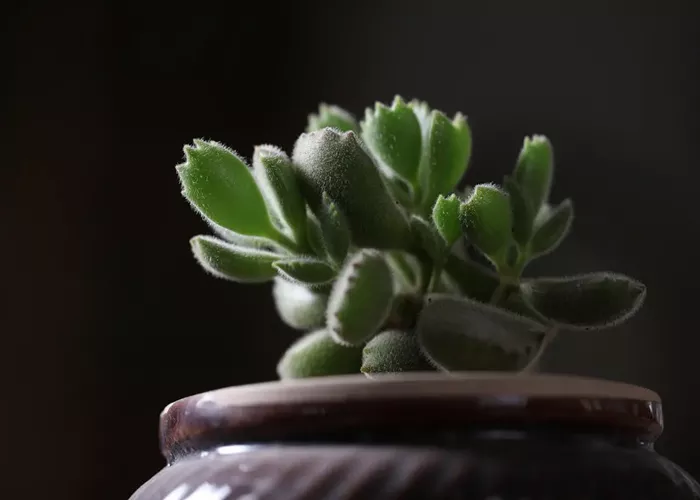In the family of succulents, bear psws succulent has won the favor of many plant lovers with its unique form and lovely appearance. However, despite the strong vitality of bear paws, the maintenance process, especially the crucial part of watering, is often confusing to novices. Too much or too little watering can have an adverse effect on the growth of meaty bear paws. So, how often is it appropriate to water bear paws?
The Growth Habits And Watering Needs Of Bear Paws
Bear paws, also known as bear boys, are succulent and belong to the sedum family. Its leaves are thick and juicy and shaped like bear claws, hence its name. In terms of growth habits, bear paws are meaty and prefer a warm, dry, sunny environment, and are not resistant to cold or moisture. Therefore, in terms of watering, we need to develop scientific watering strategies based on their growth habits.
1. Maintain moderate humidity
Bear paws are meaty and need to be kept at a moderate humidity, but not too humid. Too humid an environment tends to cause root rot, which in turn affects the growth of the plant. Therefore, when watering, we need to master the amount and frequency of watering to ensure that the soil is neither too dry nor too wet.
2. Adjust watering frequency according to the season
The frequency of watering for the meaty bear paws needs to be adjusted according to seasonal changes. In spring and autumn, which is the peak season for meaty bear paws, high humidity is needed to promote their growth. Therefore, the frequency of watering in these two seasons can be relatively high, but also to avoid standing water. In summer and winter, due to higher or lower temperatures, the meaty growth of bear paws is slowed down, and watering frequency needs to be reduced to avoid root rot or freezing damage.
How To Scientifically Master The Watering Frequency Of Bear Paws Meaty
1. Observe the degree of soil dryness
A key indicator of whether a meaty bear paw needs watering is the dryness of the soil. Before each watering, we can gently insert our fingers into the soil 2-3 cm below the surface to feel the moisture of the soil. If the soil is already dry, water it. If the soil is still wet, there is no need to water it for the time being.
2. Follow the principle of “see dry see wet”
When watering, we need to follow the principle of “see dry, see wet”. That is, every time you water, make sure that the soil is fully moist, but also avoid water accumulation. After watering, wait for the soil surface to dry slightly before proceeding to the next watering. This ensures that the bear’s meaty root system is adequately supplied with water while avoiding root rot.
3. Adjust for seasonal and weather changes
As mentioned earlier, the frequency of watering for the meaty bear PAWS needs to be adjusted according to seasonal and weather changes. In spring and autumn, due to the suitable temperature and moderate air humidity, you can water 1-2 times a week. In the summer, due to higher temperatures and large evaporation, you can water once a week or less; At the same time, attention should be paid to shading and ventilation to reduce temperature and reduce water evaporation. In winter, due to the low temperature and slow growth of the plant, it can be watered once every half month to a month or less; At the same time, pay attention to keep warm and avoid cold wind blowing directly to freeze the plant.
4. Pay attention to watering
When watering, we need to pay attention to the way of watering. It is best to use the way of gently watering along the edge of the basin, so that the water gradually permeates into the soil; Avoid direct wetting of leaves or the center of the plant to avoid causing rot or disease. At the same time, be careful not to pour water on the leaves so as not to leave water stains affecting the appearance.
The Harm Of Excessive Watering And Countermeasures
If the bear paw meat watering too much, will lead to root rot, leaf water and other serious consequences. Therefore, in the maintenance process we need to always pay attention to avoid excessive watering. Once the problem caused by excessive watering is discovered, we need to take immediate steps to remedy it:
1. Stop watering and ventilate
If we find problems such as root rot or leaf water caused by overwatering bear paws, we need to stop watering immediately and move the plant to a well-ventilated place to promote water evaporation and air circulation.
2. Trim the damaged area
We need to prune away damaged roots or leaves in time to prevent the disease from spreading and infecting other healthy areas. Use clean, sharp tools when trimming and disinfect the wound after trimming to avoid infection.
3. Replant or repot
If the damage is so severe that the plant can no longer grow, we need to remove the plant and replant or change the pot to provide a new growing environment and soil conditions. When replanting or changing pots, pay attention to the use of breathable soil and pots, and avoid problems caused by excessive watering again.
Conclusion
To sum up, the watering frequency of bear paw meat needs to be comprehensively considered and scientifically adjusted according to factors such as its growth habits, seasonal changes and weather conditions. Only by mastering the correct watering method and frequency can bear paws provide a healthy and suitable growing environment for succulent bear paws to thrive and show their charming charm. It is hoped that the sharing of this article can help people better understand the watering needs of bear paws and master scientific watering methods, and provide some useful references for everyone’s plant maintenance road.
Related topics:


